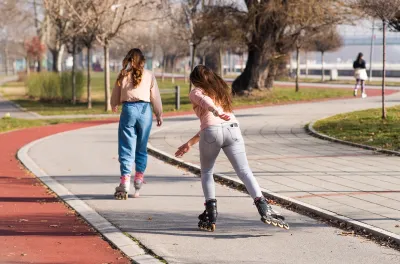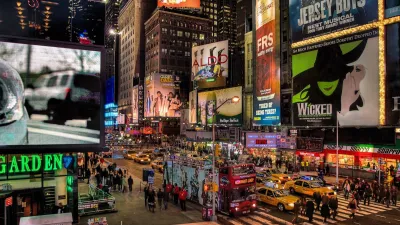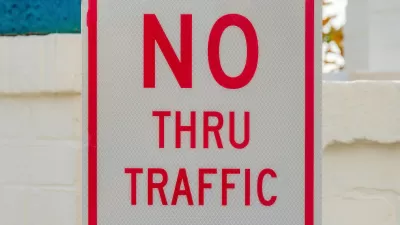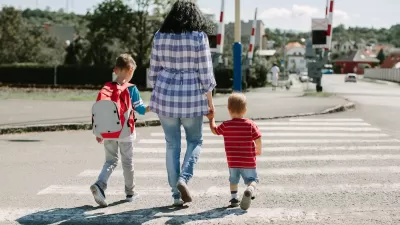Adolescent girls face unique challenges and concerns when navigating public spaces. We can design cities with their needs in mind.

Public spaces are failing teenage girls, asserts Manish Thakre in an opinion piece for Next City. “A 2019 World Health Organization-led study suggests that 85% of school-going adolescent girls worldwide fail to meet the minimum recommended hour of daily physical activity.”
A U.K. study found that more than one million teen girls who considered themselves “sporty” stopped doing sports after primary school, with reasons including “ fear of judgment (68%), lack of confidence (61%), school pressures (47%) and not feeling safe outside (43%).” For Thakre, “These issues underscore the urgent need for gender-sensitive urban planning and recreation policies.”
The United Nations recognizes play and recreation as fundamental rights, Thakre adds. “UNICEF’s guidelines on child-responsive urban planning emphasize five core benefits for children: health, safety, citizenship, environment, and prosperity – yet these are often missing in city design.”
Thakre offers examples from Bath, England and Vienna, Austria, where city officials took concerted steps to prioritize the needs of teen girls in public spaces. “To foster inclusive and safe public spaces, cities must ensure safer streets and accessible open spaces like parks and playgrounds — working with adolescent girls to meet their needs.”
FULL STORY: Our Public Spaces Are Failing Teen Girls

Planetizen Federal Action Tracker
A weekly monitor of how Trump’s orders and actions are impacting planners and planning in America.

Congressman Proposes Bill to Rename DC Metro “Trump Train”
The Make Autorail Great Again Act would withhold federal funding to the system until the Washington Metropolitan Area Transit Authority (WMATA), rebrands as the Washington Metropolitan Authority for Greater Access (WMAGA).

The Simple Legislative Tool Transforming Vacant Downtowns
In California, Michigan and Georgia, an easy win is bringing dollars — and delight — back to city centers.

Albuquerque’s Microtransit: A Planner’s Answer to Food Access Gaps
New microtransit vans in Albuquerque aim to close food access gaps by linking low-income areas to grocery stores, cutting travel times by 30 percent and offering planners a scalable model for equity-focused transit.

This City Will Pay You to Meet Your Neighbors
A North Kansas City grant program offers up to $400 for residents to throw neighborhood block parties.

Commentary: Our Silence Will Not Protect Us
Keeping our heads down and our language inoffensive is not the right response to the times we’re in. Solidarity and courage is.
Urban Design for Planners 1: Software Tools
This six-course series explores essential urban design concepts using open source software and equips planners with the tools they need to participate fully in the urban design process.
Planning for Universal Design
Learn the tools for implementing Universal Design in planning regulations.
Smith Gee Studio
City of Charlotte
City of Camden Redevelopment Agency
City of Astoria
Transportation Research & Education Center (TREC) at Portland State University
US High Speed Rail Association
City of Camden Redevelopment Agency
Municipality of Princeton (NJ)





























